Imagine you’re a small business owner who’s just invested in HubSpot’s marketing platform, excited about the potential to grow your customer base. Six months in, you’re seeing results, but there’s a catch – your success is driving up costs faster than your revenue. This scenario is playing out for countless small businesses using HubSpot, leaving many to wonder if the platform’s pricing structure is sustainable for their growth.
In today’s digital marketing landscape, customer relationship management (CRM) tools like HubSpot are essential for businesses of all sizes. However, as we delve into HubSpot’s pricing model, we’ll uncover why many users, particularly small businesses, find it increasingly expensive as their contact lists grow. This article will explore the intricacies of HubSpot’s pricing structure, its impact on small businesses, and potential alternatives. By the end, you’ll have a comprehensive understanding of the challenges posed by HubSpot’s pricing and insights into more cost-effective solutions for growing businesses.
Key Facts
- HubSpot’s pricing is based on the number of contacts, with costs increasing significantly as contact lists grow.
- Small businesses often face unexpected price hikes when scaling their operations within the HubSpot ecosystem.
- The platform’s tiered pricing structure and additional fees for advanced features can quickly make it cost-prohibitive for small enterprises.
- Prism Reach offers a more scalable and cost-effective alternative to HubSpot’s pricing model.
- Utilizing AI-powered tools can help optimize email marketing costs and improve engagement without escalating expenses.
Upgrade Your Email Marketing with AI Personalization!
The Hidden Costs of Scaling with HubSpot
At first glance, HubSpot’s pricing structure seems straightforward. However, as businesses delve deeper into the platform’s offerings, they often encounter a complex web of costs that can quickly spiral. The core issue lies in HubSpot’s contact-based pricing model, which directly ties costs to a company’s growth.
The Contact Conundrum
HubSpot’s Starter plan begins at $15 per month for 1,000 marketing contacts, which seems reasonable for a fledgling business. However, the real challenge emerges as your contact list expands. For every additional 1,000 contacts, you’re looking at an extra $ per month. This incremental cost might seem manageable initially, but it can lead to significant expenses as your business scales.
According to a study by EmailMonday, the average email list growth rate for businesses is about 3.5% per month. For a small business starting with 1,000 contacts, this growth could result in an additional 420 contacts by the end of the year. While this growth is positive, it also means an increase in HubSpot costs, potentially pushing a business into a higher pricing tier sooner than anticipated.
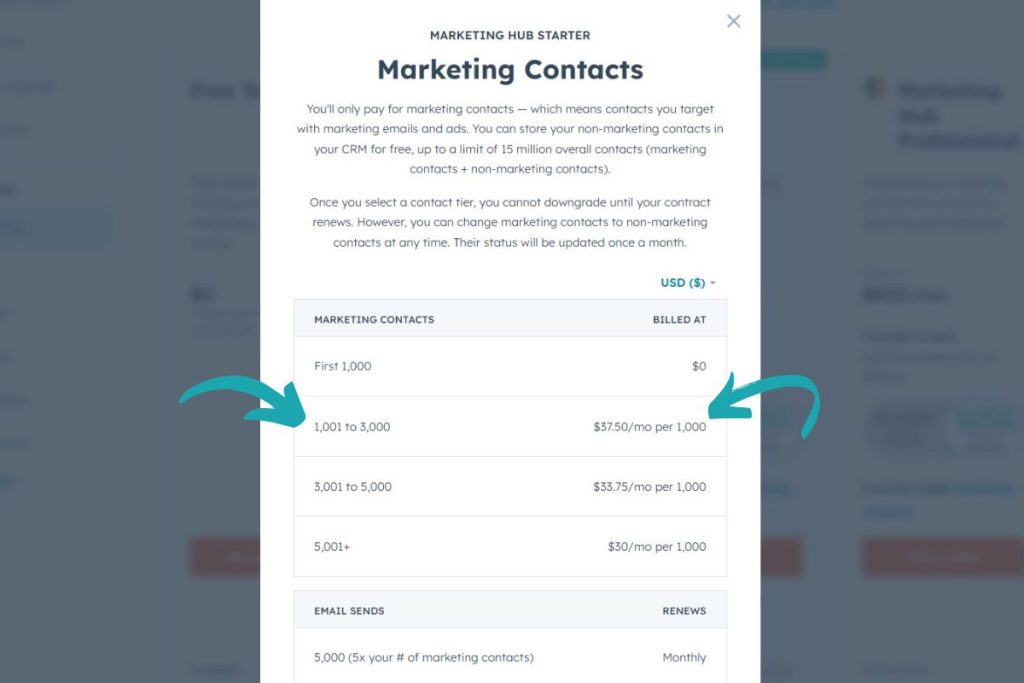
The Tier Trap
As businesses outgrow the Starter plan, they face a significant jump in costs when moving to the Professional plan. Starting at $800 per month for 2,000 contacts, with an additional $224.72 for every 5,000 contacts thereafter, this leap can be jarring for small businesses.
Dr. Lauren Harper, a digital marketing strategist, notes,
“The jump from Starter to Professional plans often catches small businesses off guard. It’s not just the monthly cost increase but also the one-time onboarding fee of $3,000 that can strain budgets.”
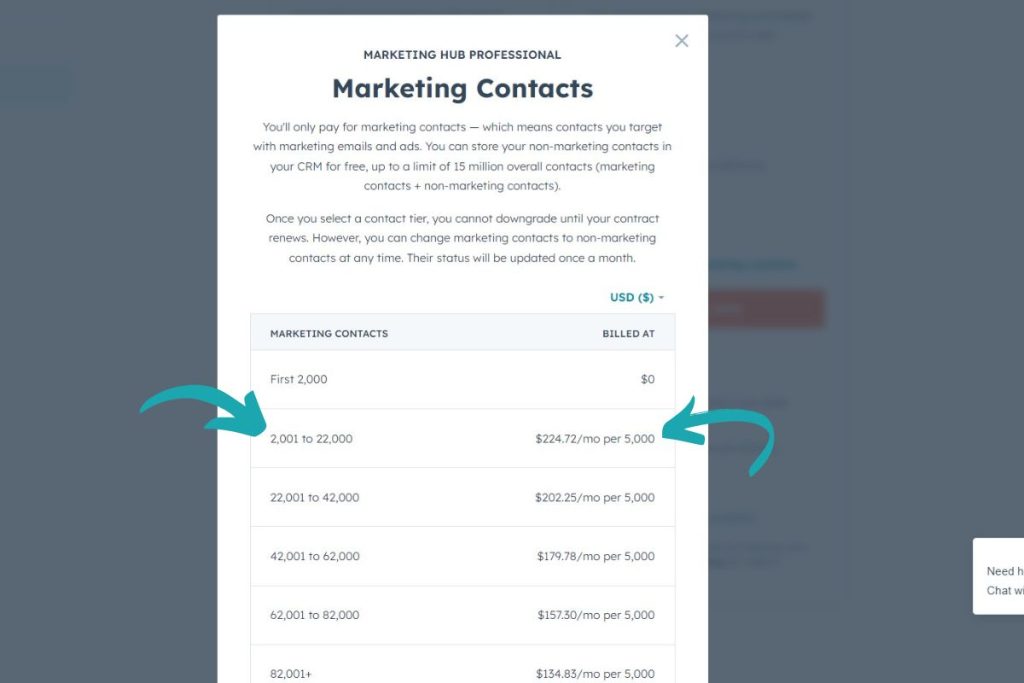
Feature Limitations and Add-On Costs
While HubSpot offers a robust set of features, many advanced tools are only available in higher-tier plans. This limitation often forces businesses to upgrade prematurely to access necessary functionalities. Moreover, additional costs for services like dedicated IP addresses, custom SSL, and transactional emails can further inflate the overall expense.
John Smith, CEO of a tech startup, shares his experience:
“We initially chose HubSpot for its comprehensive toolkit. However, as we grew, we found ourselves constantly hitting feature limitations. Upgrading to access these features significantly impacted our marketing budget, forcing us to reevaluate our tech stack.”
The Impact on Small Business Growth
The escalating costs associated with HubSpot’s pricing model can have a chilling effect on small business growth. A survey conducted by Small Business Trends revealed that 35% of small businesses cited high software costs as a major barrier to adopting new marketing technologies. This hesitation to invest in growth tools due to cost concerns can potentially stifle innovation and competitiveness in the small business sector.
10 Strategies for Managing HubSpot’s Pricing Costs
Managing the costs associated with HubSpot’s pricing structure requires strategic planning and optimization. Here are ten hidden gem strategies that can help small businesses optimize their usage and minimize expenses while leveraging HubSpot effectively.
1. Utilize Free and View-Only Seats
Take advantage of HubSpot’s new seat-based pricing model by assigning free view-only seats to team members who do not need editing capabilities. This allows you to keep core seat costs low while still providing access to essential data for your team.
By utilizing free seats effectively, you can ensure that only those who truly need to interact with and manage your HubSpot account are incurring costs, thereby reducing overall expenses.
2. Regularly Clean Your Contact List
Maintain an updated contact list by regularly removing inactive or unsubscribed contacts. HubSpot does not charge for unsubscribed emails, so keeping them in a separate list can help reduce your billable contacts and overall costs significantly.
Implementing regular list hygiene practices ensures that you are only paying for contacts who are actively engaged, thereby optimizing your HubSpot expenses.
3. Implement Progressive Profiling
Instead of asking for extensive information upfront, use progressive profiling to gather data over time based on user interactions. This approach can help you maintain a smaller, more engaged contact list, reducing the costs associated with larger lists.
Progressive profiling respects user privacy while still providing the data necessary for deep personalization, leading to more meaningful and effective email campaigns without inflating your contact list.
4. Bundle Purchases for Discounts
If you plan to use multiple HubSpot Hubs (like Marketing, Sales, and Service), consider purchasing them together. Bundling can lead to significant discounts compared to buying each hub separately over time.
Bundling purchases not only provides cost savings but also ensures seamless integration between different HubSpot Hubs, enhancing overall efficiency and effectiveness.
5. Negotiate Pricing at Key Times
Engage with HubSpot sales representatives towards the end of the month or quarter when they are more likely to meet sales targets. This timing can provide leverage for negotiating better pricing or discounts.
By strategically timing your negotiations, you can secure more favorable pricing terms, making HubSpot a more affordable option for your growing business.
6. Monitor Contact Growth Proactively
Keep a close eye on your contact growth and set thresholds for when to upgrade your plan or add additional contacts. This proactive approach can help you anticipate costs before they escalate.
Proactively monitoring contact growth allows you to make informed decisions about scaling your HubSpot usage, ensuring that you stay within budget while still meeting your marketing needs.
7. Utilize HubSpot’s AI Tools
Leverage HubSpot’s AI features across all tiers to enhance productivity without needing to upgrade to higher-priced plans. These tools can provide insights that help you make better marketing decisions without incurring additional costs.
By maximizing the use of AI tools available in your current HubSpot plan, you can achieve higher efficiency and effectiveness in your email marketing campaigns without the need for costly upgrades.
8. Use Automation Wisely
Implement automation features within HubSpot to streamline processes and reduce manual work. Efficient use of automation can save time and resources, allowing your team to focus on high-impact activities without needing additional seats or features.
Smart automation reduces the need for additional manpower, thereby optimizing your HubSpot usage and minimizing costs associated with manual tasks.
9. Take Advantage of Training Resources
Utilize HubSpot Academy’s free training resources to maximize your understanding of the platform’s capabilities. Well-trained staff can use existing features more effectively, reducing the need for costly upgrades or additional tools.
Investing in training ensures that your team can fully leverage HubSpot’s features, maximizing the return on your investment and avoiding unnecessary expenses.
10. Stay Informed About Pricing Changes
Regularly check for updates on HubSpot’s pricing structure and promotional offers that could benefit your business. Being informed allows you to make timely decisions about upgrades or changes in your subscription that align with your budget.
Staying updated with HubSpot’s pricing changes and promotions ensures that you can take advantage of cost-saving opportunities as they arise, keeping your expenses in check while still benefiting from HubSpot’s features.
Revolutionize Your Email Marketing with Prism Reach
While the strategies mentioned above form the foundation of successful cost management with HubSpot, leveraging advanced AI-powered solutions like Prism Reach can offer a more scalable and cost-effective alternative. Prism Reach’s sophisticated AI algorithms provide deep personalization capabilities that can significantly enhance the effectiveness of your email campaigns without the escalating costs associated with HubSpot.
Prism Reach’s proprietary AI technology clusters content and creates detailed user avatars, enabling hyper-personalized newsletters that consider factors like location, engagement history, and predicted interests. This level of customization ensures that each subscriber receives content that’s not just relevant but truly engaging.
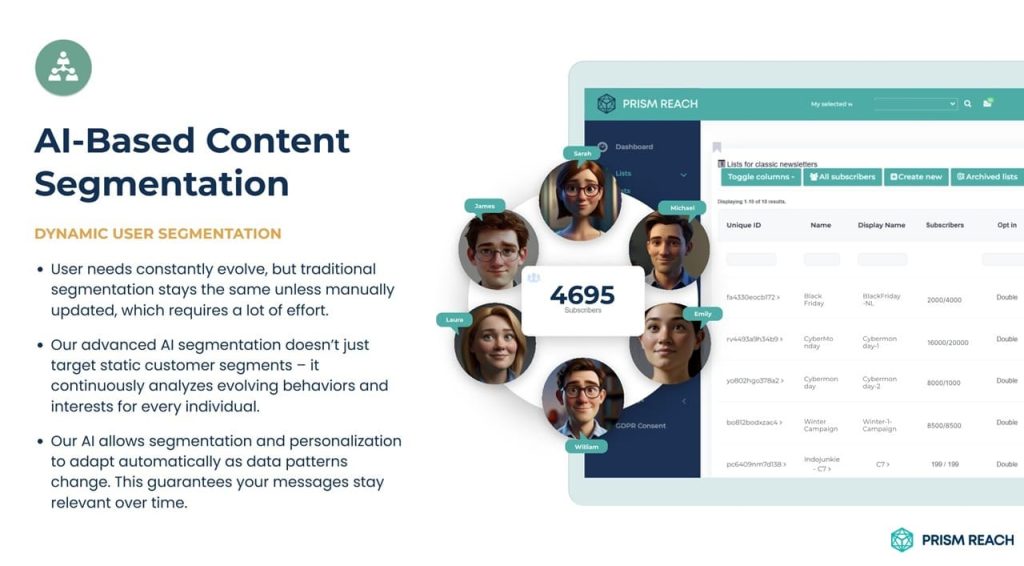

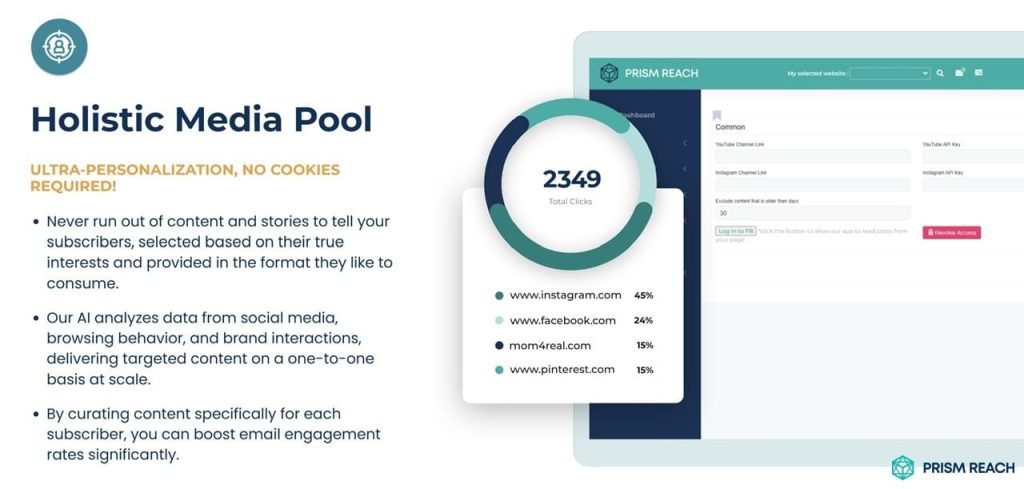
Key Benefits of Prism Reach
- Enhanced Personalization: Prism Reach creates detailed user avatars, allowing for highly personalized email content that resonates with individual subscribers.
- Optimized Send Times: AI-powered send time optimization ensures that your emails are delivered when subscribers are most likely to engage, increasing open and click-through rates.
- Comprehensive Analytics: Detailed engagement analytics provide actionable insights, enabling continuous optimization of your email strategies for maximum effectiveness.
With features like AI-generated send time suggestions, automated time zone segmentation, and comprehensive engagement analytics, Prism Reach offers a comprehensive toolkit for modern email marketers looking to maximize their campaign effectiveness.
Seamless Integration and User Experience
Prism Reach offers a seamless setup and integration process, allowing marketers to get started quickly and efficiently. Its user-friendly interface includes drag-and-drop editors, pre-designed templates, and AI-enhanced sign-up forms that increase sign-up rates and improve GDPR compliance.
Advanced Analytics and Reporting
The platform provides in-depth analytics and reporting features, enabling marketers to track key metrics such as open rates, click-through rates, and conversion rates. With tools like sentiment analysis and churn prediction, Prism Reach offers valuable insights to continuously optimize email campaigns.
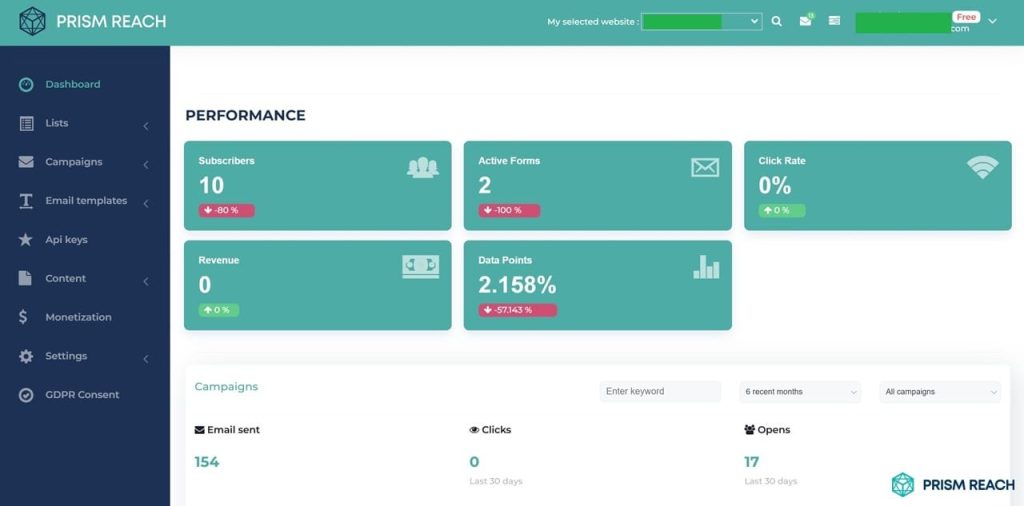
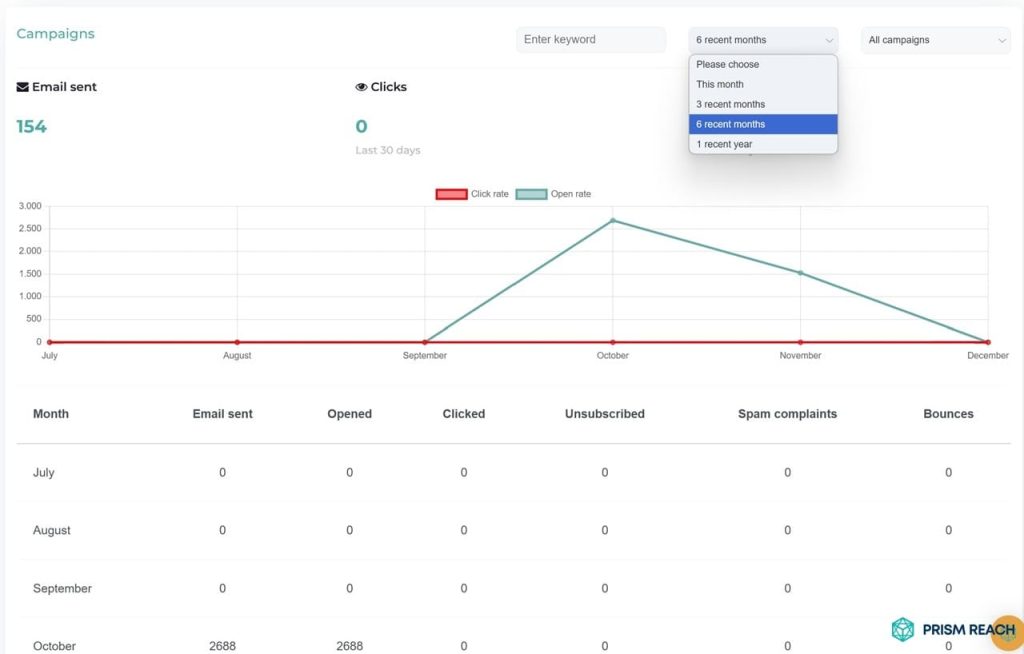
Collaboration and Support
Prism Reach fosters team collaboration with features like role-based access controls and multi-language support. Additionally, its integrated customer support chat and comprehensive API documentation ensure that users have the resources they need to succeed.
Benefits of Prism Reach
- Increased Engagement: Publishers report up to 40% higher engagement rates due to the personalized nature of the content. By tailoring send times to when each subscriber is most active, Prism Reach ensures that your emails are seen and interacted with more frequently.
- Higher Revenue: Tailored advertising and efficient content targeting lead to higher monetization rates for published newsletters. Prism Reach’s dynamic content selection ensures that each email contains the most relevant offers and information, driving better conversion rates.
- Improved Productivity: Automation and AI-driven insights significantly reduce the time required to create and manage campaigns. With features like automated workflow setup and AI-generated content suggestions, marketers can focus more on strategy and less on manual tasks.
- Enhanced Personalization: Prism Reach’s user avatars and detailed subscriber profiles allow for highly personalized email content, fostering stronger connections with your audience.
- Comprehensive Analytics: Detailed engagement analytics provide actionable insights, enabling continuous optimization of email strategies for maximum effectiveness.
Prism Reach not only optimizes send times but also enhances the overall email marketing strategy by providing tools that cater to personalization, automation, and analytics. This holistic approach ensures that your email campaigns are not only timely but also highly relevant and engaging to each subscriber.
Upgrade Your Email Marketing with AI Personalization!
FAQ
Conclusion
HubSpot’s pricing structure, while offering a comprehensive suite of marketing tools, presents significant challenges for small businesses aiming to scale. The contact-based pricing model, steep tier jumps, and additional costs for essential features can quickly make HubSpot an expensive option as businesses grow.
Managing the costs associated with HubSpot requires strategic planning and optimization. By implementing strategies such as utilizing free seats, regularly cleaning your contact list, implementing progressive profiling, bundling purchases, and negotiating pricing at key times, small businesses can mitigate the financial impact of HubSpot’s pricing structure.
However, for those seeking a more scalable and cost-effective alternative, innovative solutions like Prism Reach offer a superior approach. Prism Reach leverages advanced AI technology to deliver deep personalization and comprehensive analytics without the escalating costs tied to contact list growth. This makes it an ideal choice for small businesses looking to maximize their email marketing effectiveness while maintaining budget control.
As the digital landscape continues to evolve, it’s crucial for businesses to choose platforms that not only meet their current needs but also support their future growth without becoming a financial burden. By adopting strategic cost management practices and exploring alternative solutions like Prism Reach, small businesses can ensure sustainable growth and continued success in their marketing efforts.
Sources
- 9H Digital. (2024). Understanding the New HubSpot Pricing Model. Retrieved from 9H Digital
- Paddle. (n.d.). SaaS Pricing Teardown: HubSpot’s Pricing Strategy. Retrieved from Paddle
- Auxilio. (n.d.). HubSpot Pricing: 12 Ways to Save on Your Invoice. Retrieved from Auxilio
- Growth Natives. (n.d.). How to Optimize the Cost of HubSpot. Retrieved from Growth Natives
- Simple Strat. (n.d.). HubSpot Pricing and Steps to Picking the Right Package. Retrieved from Simple Strat